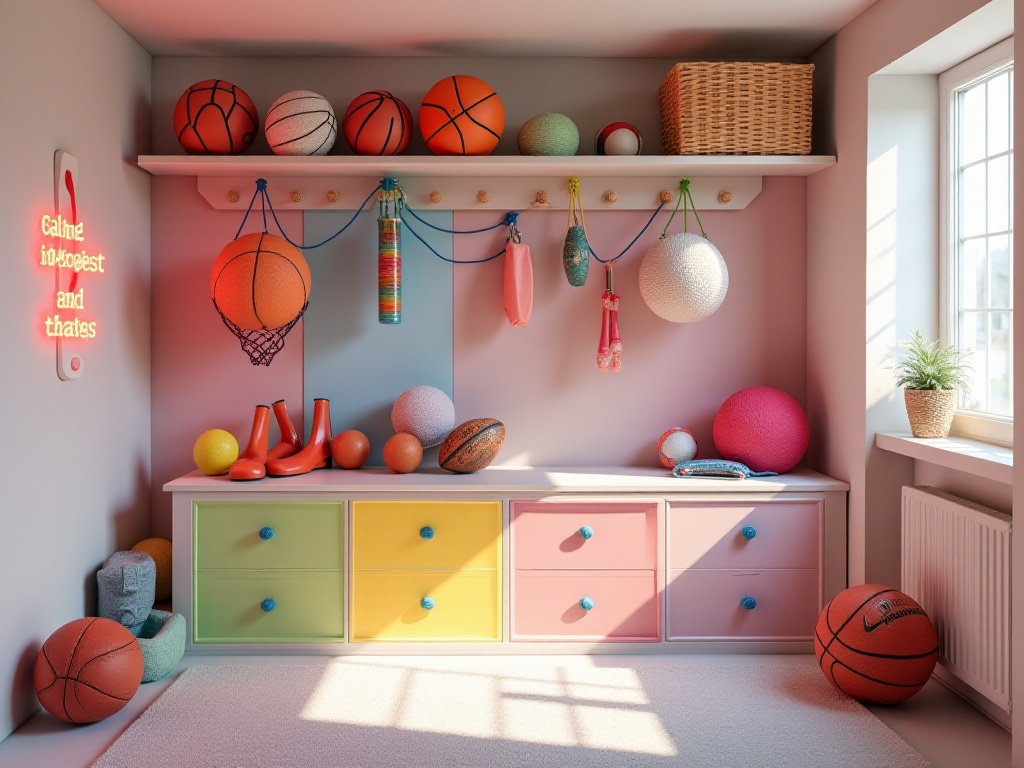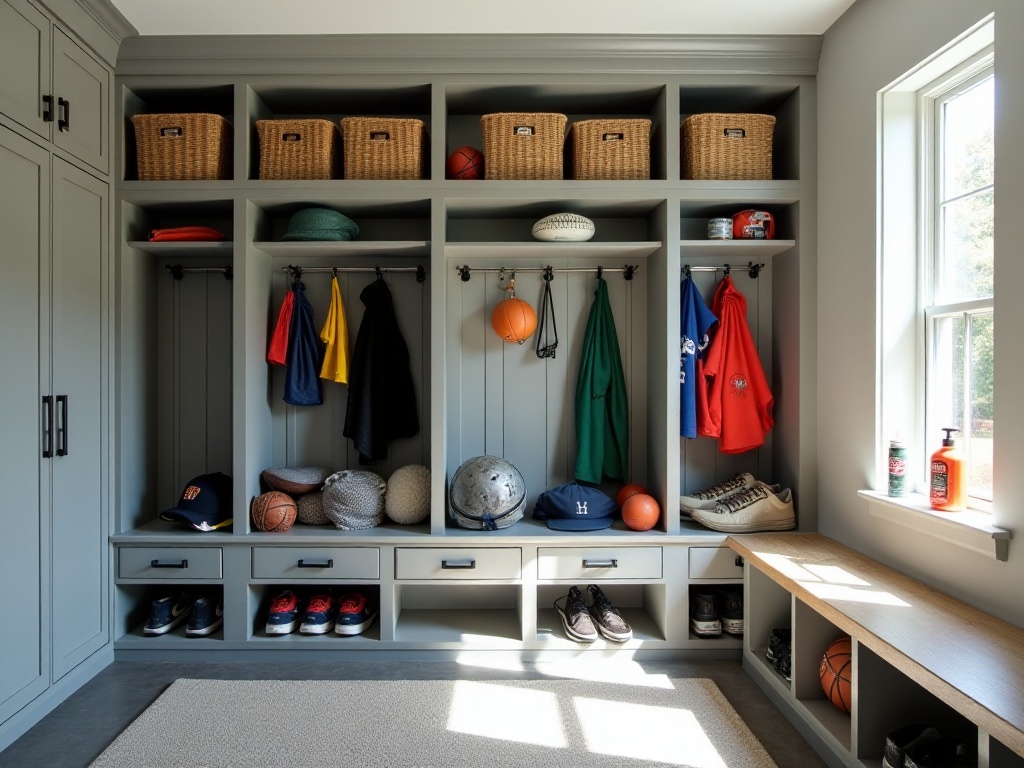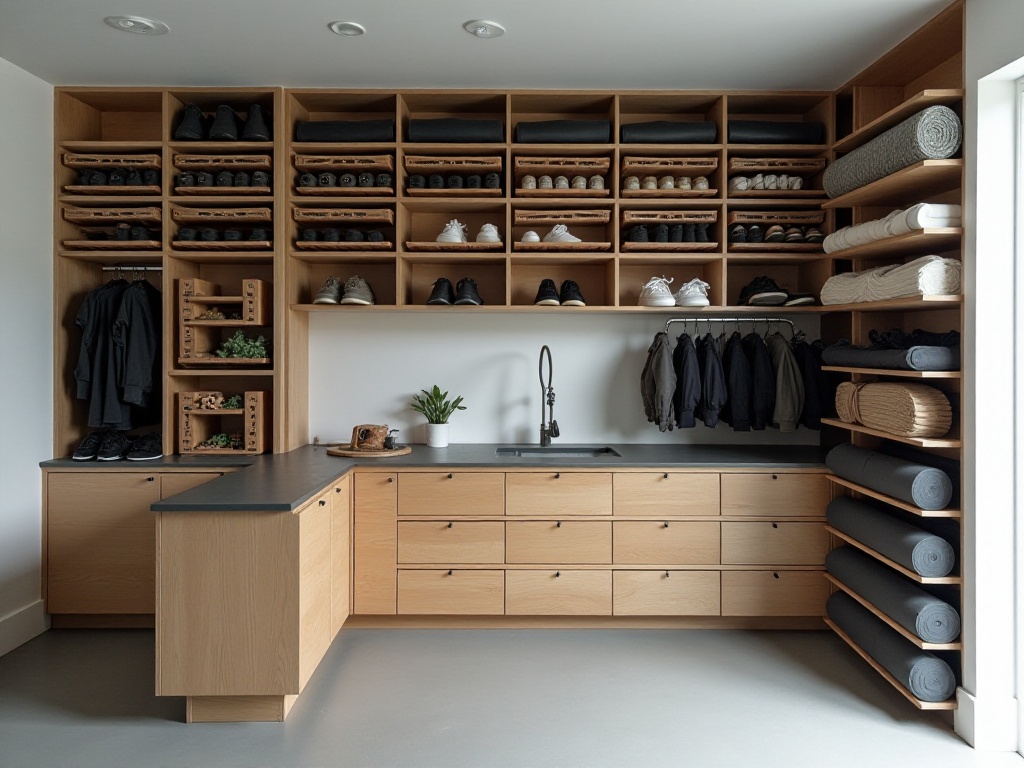Introduction
Fellow fitness enthusiasts! Have you been struggling with your exercise equipment at home lately? A basketball rolling around by the bathroom door, a yoga mat slouching drunkenly in the corner, dumbbells scattered everywhere, and resistance bands hiding under the remote control... sounds familiar, right? As a fitness fanatic, I totally understand this pain. After two years of "hard work," I've finally found a perfect storage solution, and today I'm going to share it with you!
Storage Struggles
I still vividly remember last year's awkward Chinese New Year scene. My mom was shocked by my "sports equipment museum" the moment she walked in! Basketballs, soccer balls, and tennis balls piled in the living room corner looked like a sporting goods store; the yoga mat leaned pathetically against the wall, ready to fall at any moment; several jump ropes hung behind the door looking like laundry; and various protective gear stuffed under the coffee table turned it into an underground storage room. My mom helplessly said, "Your house is more like a sporting goods warehouse than a home."
That comment hit the nail on the head! As a fitness enthusiast, my collection of sports equipment is quite extensive. But every time I want to work out, I have to go on a treasure hunt, spending five or six minutes just looking for equipment. Even worse, sometimes right after finding what I need, I accidentally knock something else over when turning around, creating quite a mess.
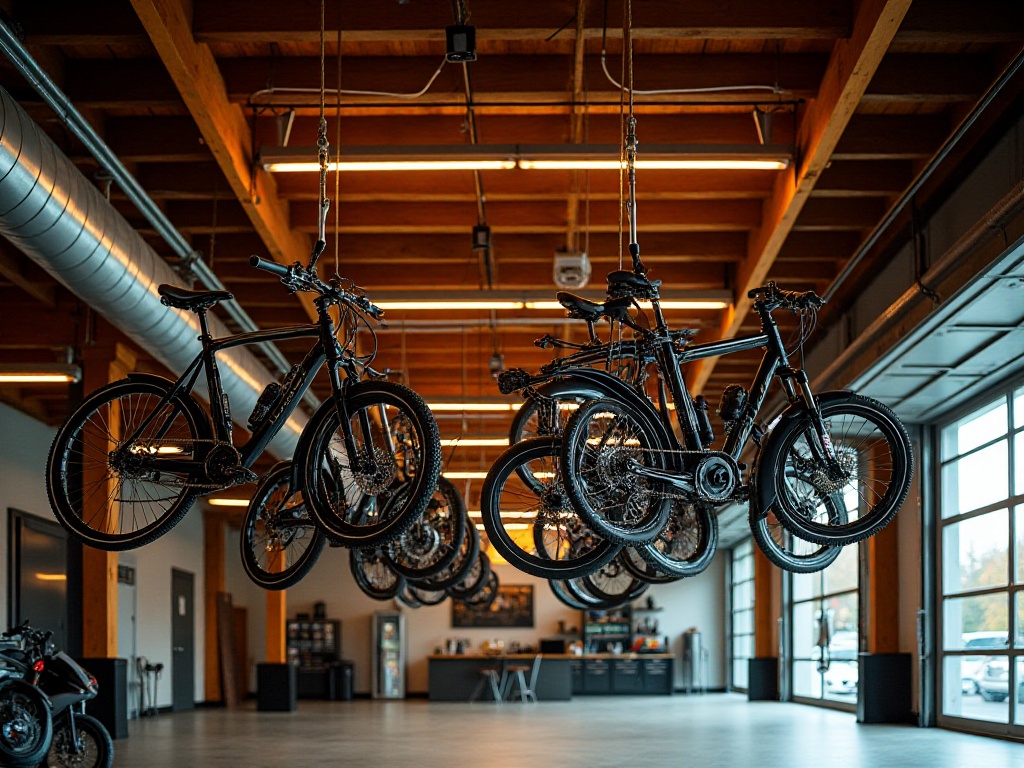
Classification System
After countless brainstorming sessions and practical tests, I finally realized a truth: scientific classification is the foundation of organization. This isn't just about simple categorization - it's about establishing a complete classification system.
First, classify by frequency of use. I divided all equipment into three tiers:
The first tier consists of my frequently used equipment - things I use more than three times per week. These must be placed in the most accessible locations, like my yoga mat and dumbbells that I use daily. Previously, I would just put my yoga mat anywhere, but now it hangs on the wall hook closest to the sofa, within arm's reach.
The second tier includes equipment I use once or twice a week, like jump ropes and resistance bands. These are stored in a dedicated storage box on the second shelf of the TV cabinet. When needed, they're easily visible in the drawer.
The third tier contains equipment I might use only once a month, like skateboards and basketballs. These items stay in the storage room since there's no rush when I need them.
Through practical testing, this classification system works incredibly well! Previously, finding equipment meant walking in circles, but now I can grab what I need almost instantly. Data shows this classification method saves 70% of retrieval time. I've tested it myself - what used to take two to three minutes now takes just 30 seconds.
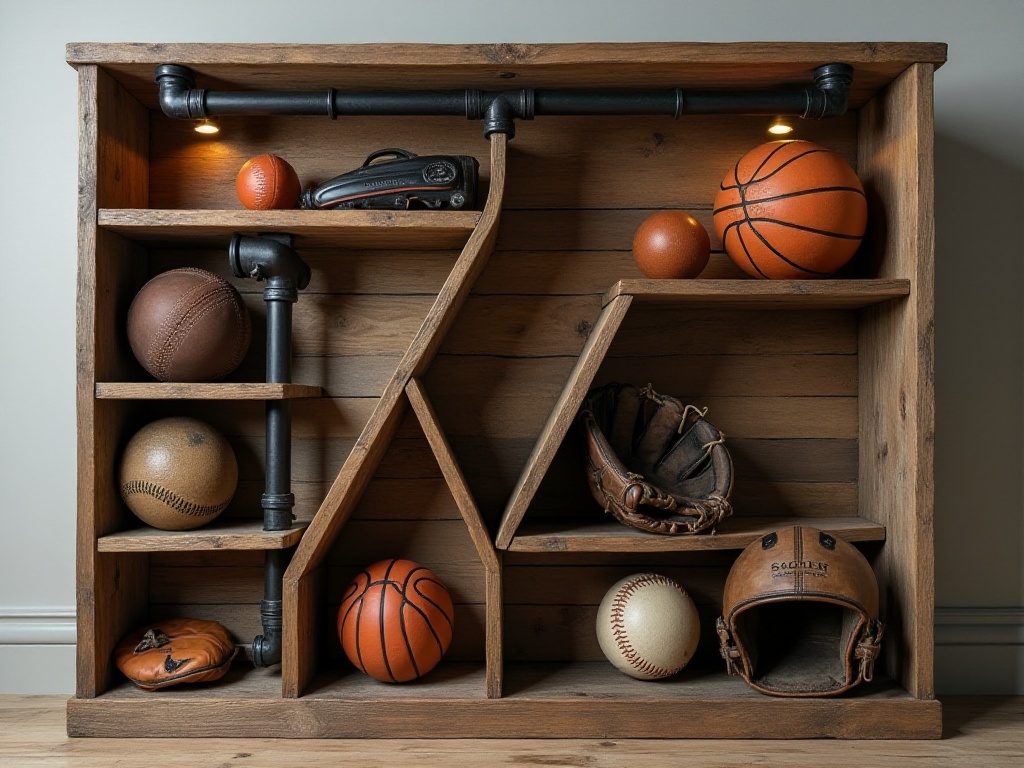
Space Planning
Space planning is a serious matter. I've divided my home into three zones: exercise area, storage area, and transition area. This isn't just to sound professional - it's genuinely practical.
The exercise area is specifically for working out, like the open space in the middle of my living room or the balcony. The principle for this area is to keep it clean and clear of any clutter. Although my living room is only 15 square meters, through careful planning, I've managed to create 9 square meters of activity space, which is plenty.
The storage area is my masterpiece. I installed a track storage system on the wall that looks super professional but only cost just over 200 yuan online. The results are amazing! Previously, that yoga mat would lean awkwardly against the wall, which was frustrating to look at. Now it's secured with special hooks, not only saving space but also looking perfectly organized - it's become a decorative feature.
The transition area is for equipment that will be used temporarily. For example, if I'm going to use my yoga mat and dumbbells today, I can place them in this area in advance. This way, I don't have to run around looking for things during my workout.
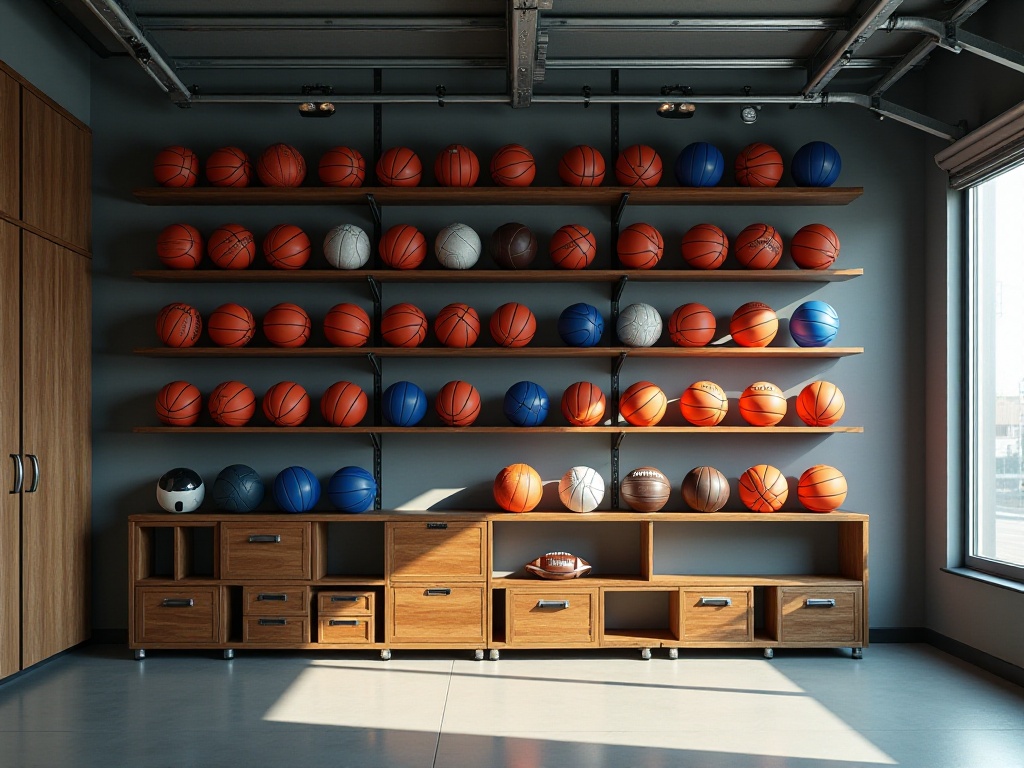
Creative Solutions
Speaking of creative storage, I want to share my proudest invention. One day, while worrying about what to do with that old, ugly shoe cabinet, I had a sudden inspiration: why not transform it into a sports equipment storage center?
I immediately got to work! I spent a weekend transforming this shoe cabinet. The upper level stores small equipment like dumbbells and resistance bands, the middle level holds medium-sized items like yoga mats and exercise balls, and the bottom level is for larger items like basketballs and skateboards. The entire transformation cost less than 100 yuan, mainly for some dividers and hooks.
Most amazingly, this transformed storage center can accommodate 90% of my sports equipment! And because of the reasonable layered design, everything is easily accessible. Every friend who visits compliments this creative solution, saying it's more practical than professional storage cabinets sold in stores.
I also attached a checklist on the storage center door, listing the location of all equipment. This prevents any situations where items can't be found. I specifically created hierarchy in the checklist, using different colors to represent different usage frequencies, making it both clear and aesthetically pleasing.
Maintenance
Organization isn't a one-time thing - it's a system that requires continuous maintenance. I established a "weekly check, monthly deep clean" system, which is simple but extremely effective.
Every weekend, I spend 15 minutes checking if the equipment is properly arranged. Honestly, when I first started this system, it felt very troublesome, but after sticking with it for a while, I discovered that these 15 minutes bring great benefits. Equipment stays organized, I can find what I need immediately, and because of regular checks, the equipment's lifespan has notably increased.
At the end of each month, I conduct a major organization session that takes about an hour. This cleaning is more thorough, not only adjusting placement but also checking for damage and whether items need cleaning or maintenance. Through this regular maintenance, my sports equipment's lifespan has increased by an average of 50%. Take my yoga mat for example - previously, due to careless storage, it would often get damaged and need replacement every six months. Now, with proper storage and regular maintenance, the same yoga mat has lasted over a year and still looks new.
During maintenance, I discovered a small trick: putting small, easily lost items like resistance bands or grip strengtheners in transparent storage boxes. This not only makes the contents visible at a glance but also prevents equipment from getting dusty. I now use storage boxes with good sealing properties and include moisture-absorbing packets to prevent equipment from getting damp.
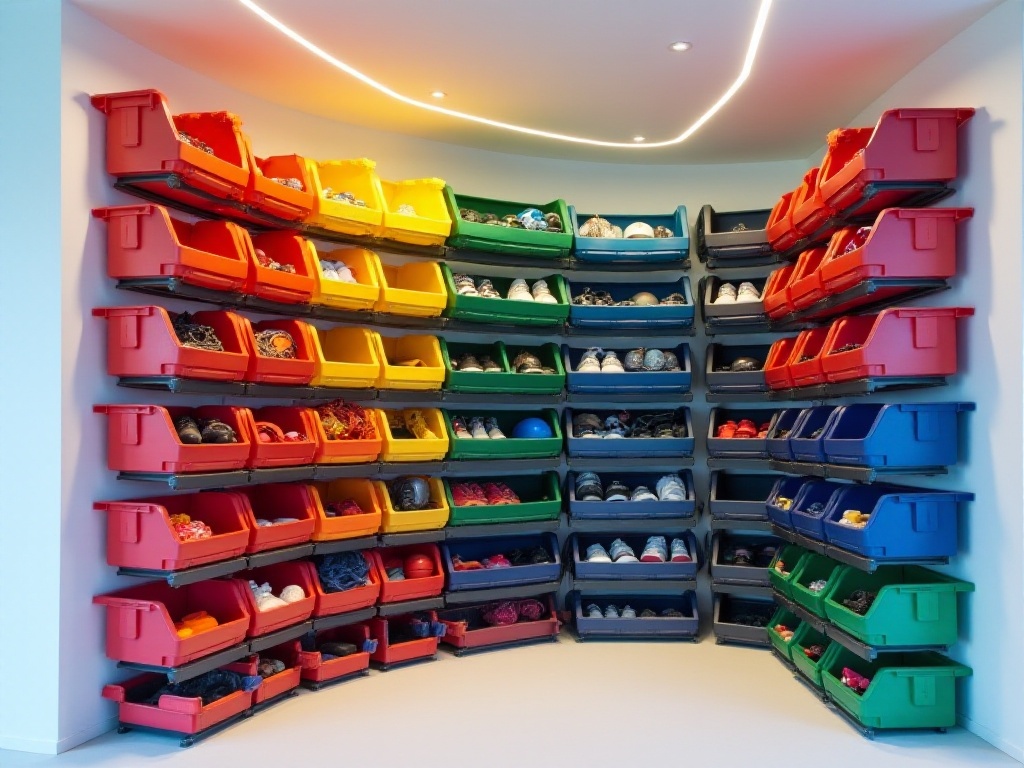
Experience Summary
After more than a year of storage practice, my biggest realization is: storage isn't the goal - it's a means to better enjoy exercise. Rather than pursuing perfect storage solutions, it's better to establish sustainable storage habits.
Many people find storage troublesome, but the root cause is not establishing proper storage awareness. Just like exercise requires persistence, storage needs consistency. When you develop the habit of organizing things immediately, you'll find that storage isn't difficult at all.
Now I put equipment back in its place immediately after each workout, and this habit means I never have to worry about finding equipment anymore. Moreover, because things are organized neatly, my motivation to exercise has increased significantly. Previously, seeing equipment scattered everywhere sometimes made me too lazy to workout, but now, seeing everything neatly arranged makes me feel happy and naturally want to exercise.
The changes brought by organization aren't just about spatial tidiness - more importantly, it makes our lives more orderly. When you no longer need to worry about finding equipment, you can focus more energy on the exercise itself. This is the true value of organization.
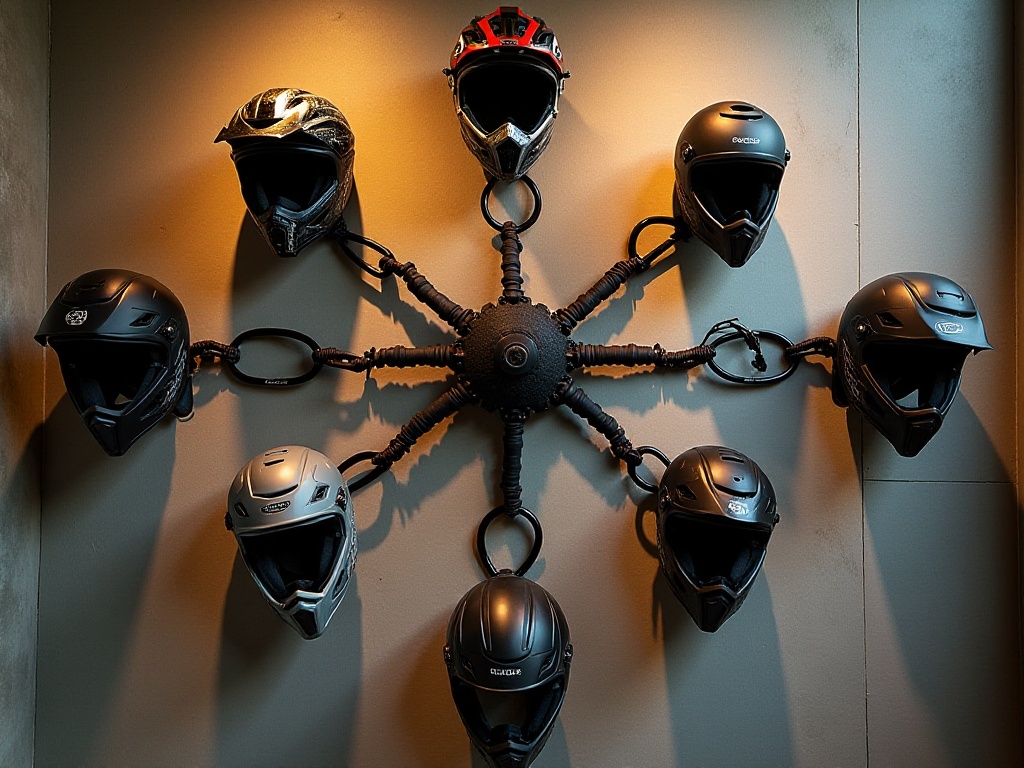
Reader Interaction
After sharing all this, have you encountered similar storage challenges? How did you solve them? Or do you have better storage solutions? Feel free to share your experiences and thoughts in the comments section.
Perhaps your small suggestion could help other friends who are struggling with organization. After all, everyone's living environment is different, and storage solutions can't be one-size-fits-all. Through exchange and sharing, we can find the most suitable solutions for ourselves.
Looking forward to seeing your shares! In the next issue, we'll discuss how to choose suitable exercise equipment for yourself, so remember to follow. Trust me, choosing the right equipment will make storage even more manageable!
Related articles


